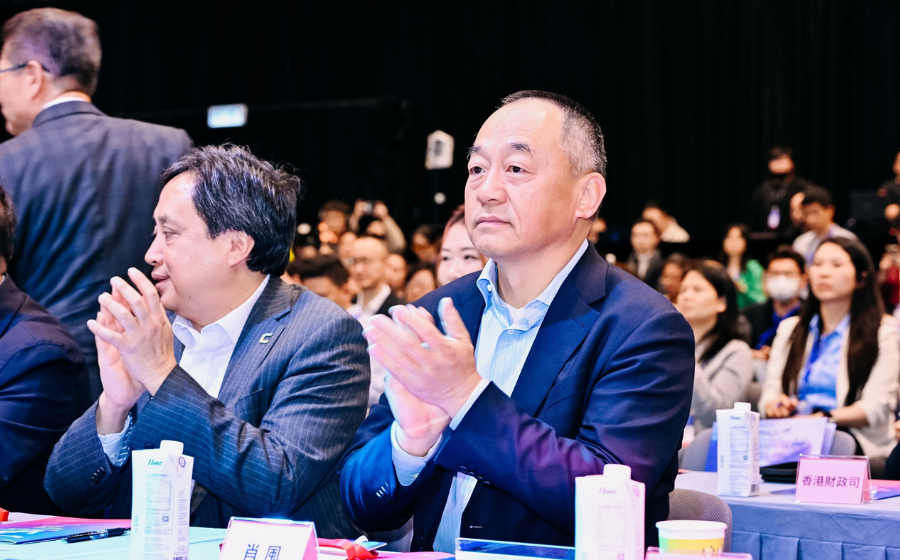
KEYTAKEAWAYS
- Geopolitical conflicts between major economies pose a significant risk to global stability, with corporate risk managers foreseeing increased turbulence.
- Supply chain challenges persist, with disruptions in pricing and resource availability expected to impact industries in the coming months.

- KEY TAKEAWAYS
- INTRODUCTION
- INTERNATIONAL AND TECHNOLOGICAL CONFLICTS SHOW NO SIGNS OF ABATING
- SUPPLY CHAIN CHALLENGES REMAIN INTRACTABLE AND INCREASINGLY INTENSE
- THE GEOPOLITICAL SHIFT IN SEMICONDUCTOR SUPPLY CHAINS: ALLIANCES, ISOLATION, AND THE RISE OF NATIONAL PRIORITIES
- SOUTHEAST ASIA TO BECOME A REGIONAL MANUFACTURING CENTER
- MAJOR COUNTRIES OF ASEAN ARE LAUNCHING SMART MANUFACTURING INITIATIVES
- ANALYSIS OF INTERNATIONAL PLAYERS (SEMICONDUCTORS AND ELECTRIC VEHICLES AS EXAMPLES)
- FUTURE SCENARIOS: WHO WILL BE MORE LIKE WHOM?
- WHAT SHOULD BE THE MINDSET AND MANAGEMENT STYLE OF ENTERPRISES GOING OVERSEAS?
- DISCLAIMER
- WRITER’S INTRO
CONTENT
INTRODUCTION
According to the Global Risks Report 2023 from the World Economic Forum, companies are expected to face significant global risks beyond 2023, threatening economic growth and destabilizing markets over the next six months.
The report has surveyed a group of corporate risk managers (CROs), and the result indicates that geopolitical conflicts between major economies are a considerable concern for them, as most respondents expect more significant global turbulence in the next six months, and more than 85% of risk managers expect volatility in economic/financial conditions within and between major economies. At the same time, the development and deployment of artificial intelligence are outpacing risk management, with 90% of respondents expecting to see the emergence of regulations. Along with the importance of self-regulation rising, more than 50% of CROs believe in conducting an artificial intelligence audit in the next six months.
Figure: Stability Distribution of Overall Environment and Technology Changes

Source: World Economic Forum
INTERNATIONAL AND TECHNOLOGICAL CONFLICTS SHOW NO SIGNS OF ABATING
Although there are many communications between the United States and China, most are formalities. The Russia-Ukraine war is still ongoing, and both sides are using more lethal weapons as restrictive means. Therefore, tech companies are currently facing higher business costs and potential limitations in market entry, resulting from instability within and between major markets, rapid fluctuations in policies, and changes in the international trade pattern. Some of these enterprises were forced to take a clear stance before being able to sell tech products in specific countries.
Recently, companies like NVIDIA and Intel informed the White House of potential business losses from restricting Chinese chip development. However, the U.S. Commerce Secretary, Raimondo, believes that, for national security, these measures are acceptable. This suggests a shift from past business doctrines. The bigger problem is that, based on the current situation, the technological conflict between the US and China will only worsen in the future and will affect the positions of countries outside of the US and China, including Europe, Japan, Korea, and ASEAN, all of which will be involved.
SUPPLY CHAIN CHALLENGES REMAIN INTRACTABLE AND INCREASINGLY INTENSE
One of the consequences of geopolitical and economic turmoil has been supply chain disruptions, which remain a significant concern for many in the industry while the pandemic eases. More than half of survey respondents believe that disruptions in pricing and availability of critical resources are likely to have a significant impact during the second half of this year.
Despite eased global supply chain pressures, many organizations struggle with uncertainties regarding input availability and pricing for certain raw materials. For example, global fuel prices remain high compared to pre-pandemic levels, and food prices in major economies are above historical averages. Along with the return of El Niño, which may potentially affect crop production and exacerbate water shortages, these situations could result in further price volatility.
Figure: Food prices are soaring in leading countries.

Source: World Economic Forum
THE GEOPOLITICAL SHIFT IN SEMICONDUCTOR SUPPLY CHAINS: ALLIANCES, ISOLATION, AND THE RISE OF NATIONAL PRIORITIES
The driving force behind the current supply chain blockade is political, not commercial. Since the start of the U.S.-China trade war, the United States blocking measures have progressed. The recent CHIPS Act in the United States mandates that the semiconductor industry prioritize four major semiconductor-producing countries: the United States, Taiwan, Japan, and South Korea, with the intention of excluding China’s involvement in the semiconductor supply chain. In the future, instead of a single global market, we might see various market composition ‘camps’ or concepts. While this may appear to go against traditional business principles, in a politically driven economy, economic alliances might be deemed a national security issue. Failure to comply with these policies may result in legal boycotts in different countries, with consequences ranging from the loss of markets to the seizure of assets, as seen in Russia and China.
Historically, international trade favored those with the lowest production costs and highest capacities. For example, in 1982, only 30% of the labor force of United States multinational corporations was located overseas, but by 2014, the percentage had risen to 60%, with China being the most densely distributed overseas location for its labor force. In recent years, however, China’s efforts to promote local industries, steal technology from foreign companies, and implement a zero-COVID policy have caused and even accelerated the withdrawal of foreign companies. Although conflicts have traditionally been resolved through business cooperation and multi-party agreements, the prevailing international approach nowadays is leaning toward isolation instead of cooperation, and the legislation and policies are conveying the idea of “setting your own standards while excluding others,” “local production, local supply,” and “establishing a supply chain with the same philosophy.” In addition, major technology and semiconductor companies are almost the only ones with enough bargaining power to negotiate with governments, while the rest of the industry typically follows their lead. The era of supply chain alliances has officially arrived.
Korea and Taiwan are in a similar situation as the United States continues to try to isolate China in the global supply chain. The trend of pressuring Korean companies to withdraw from China and increase their investments in the United States is likely to continue for some time. For example, Samsung Electronics will spend $17 billion on a new wafer fab in Texas; Hyundai Motor Group and LG Corporation plan to invest $10.5 billion and $11 billion, respectively, in the United States; and SK Group plans to invest $22 billion in the U.S. semiconductor, biotech, and energy markets in response to the current instability in China.
China’s vast market may not help them compete against the US, as the US holds the key upstream semiconductor equipment and uses it as a constraint. The U.S. Chips Act also spells out a strong desire to build its own supply chain, even if many believe that $52 billion in subsidies will keep the status quo. Similarly, the Chips Act is also related to the chip alliances, such as Intel, Samsung, TSMC, GlobalFoundries Inc., etc. Furthermore, the Act prohibits its beneficiaries from building or expanding advanced fabs in China, Iran, North Korea, and Russia in the next ten years.
In addition to the United States, Europe, Japan, and South Korea have also increased the semiconductor and electronics industry chain policy investment. The European Commission launched the European Chips Act in February 2022, expecting to mobilize more than 43 billion euros (about $48 billion) of public and private investment to strengthen Europe’s wafer research and manufacturing capacity. The goal is to increase the EU’s global share of wafer capacity from the current 10% to 20% by 2030. Japan passed a wafer subsidy bill in January 2022, with a total budget of 600 billion yen (approximately $5.2 billion) to support wafer manufacturers, including a 400 billion yen (approximately $3.47 billion) subsidy to TSMC. In May 2021, South Korea released the “South Korea Semiconductor Strategy,” announcing that it will invest 510 trillion yen (approximately $4.5 billion) in the next ten years in the semiconductor industry in partnership with 153 South Korean companies, including Samsung Electronics and SK Hynix. The strategy aims to build Korea into the world’s largest semiconductor production base, leading the global supply chain of semiconductors. These bills reveal that the supply chain of key industries has become the central axis of industrial policy development. The challenges encountered by the electronics industry will escalate from the industrial level to the national security level. Meanwhile, the ongoing issues of material shortages and port congestion persist. With the onset of the high-interest rate era, the complexity of future supply chain challenges is likely to increase.
SOUTHEAST ASIA TO BECOME A REGIONAL MANUFACTURING CENTER
The current supply chain landscape of the electronics manufacturing industry is shifting or expanding production to North America and Taiwan for high-end products and to Southeast Asia and Eastern Europe for middle- and low-end products. According to the survey of overseas investment of the top 100 groups by CRIF, Taiwan’s international deployment has shown several major trends after the epidemic, one of which is to strengthen investment in ASEAN. Taiwan’s top 100 groups have seen positive growth in ASEAN investment for ten years in a row. Many electronic manufacturers and even traditionalists in the industry have begun to consider setting up regional manufacturing centers in ASEAN, and the three significant regions of Singapore, Malaysia, and Indonesia may become the subsequent smart manufacturing hubs.
As more foreign enterprises establish regional headquarters in Singapore to tap into the Southeast Asian market, it reinforces Singapore’s role as a technological and manufacturing hub. Many companies, both domestic and foreign, view Singapore as a prime manufacturing hub for serving Southeast Asian customers. Given this, factories and R&D centers in Singapore need to be more advanced and higher value-added in order to compete in Singapore, and companies with slower technological development will gradually move their factories to neighboring countries, such as Malaysia and Indonesia. As a result, Singapore will drive technological advancement in neighboring countries while strengthening its regional manufacturing position, indicating that other Southeast Asian countries will become more reliant on Singapore.
The foreign direct investment (FDI) of Singapore, anticipated to remain the highest in Southeast Asia, also spurs growth in neighboring countries. Southeast Asia’s share of global FDI grew from 5.8% in 2015 to 13.7% in 2020 and is expected to rise further, propelled by regional and intelligent manufacturing trends.
MAJOR COUNTRIES OF ASEAN ARE LAUNCHING SMART MANUFACTURING INITIATIVES
The global supply chain is undergoing restructuring and reorganization, while national security and local supply have become the priority for various countries. Under this new decision-making model, establishing an integrated industrial supply chain of a certain scale in neighboring markets will gradually become the mainstream of enterprises’ layout strategy. As essential markets such as the U.S. and China have steadily reached saturation, South Asia and other emerging countries are attracting brand owners to set up distribution channels with market potential and investment incentives. Although the economic development of Southeast Asia is primarily a planned economy under specific factors, so far, Singapore, Malaysia, and Indonesia have been quite active in promoting innovative manufacturing policies and have grasped the supply and demand gaps in the epidemic and supply chain to attract foreign investment.
Singapore’s Policy and Strategy for Industry 4.0
Singapore proactively supports the adoption of Industry 4.0 by offering a range of grants and tax incentives. These incentives target innovative technologies, the digital transformation of businesses, overseas expansion, enterprise growth, collaborative innovation, talent development, and more. One notable initiative includes programs designed to entice foreign enterprises to establish their regional or international headquarters in Singapore. Additionally, there are benefits for investing in production equipment and increasing the average value of output per unit of land. At the same time, Singapore has also released an industrial transformation map, with the Singapore Economic Development Board prioritizing the transformation of key manufacturing industries, such as semiconductors, precision engineering, electronics, marine and offshore industries, aerospace, and energy and chemicals. Singapore’s RIE2025 program further propels the nation towards becoming a smarter and more digitally advanced economy. This ambitious initiative intertwines advanced manufacturing technologies with elements of connectivity, academic research, human resources, innovation, and entrepreneurship. Furthermore, as the most significant source of Foreign Direct Investment (FDI) into Malaysia and Indonesia, Singapore’s long-standing investment presence in these countries is evident.
Malaysia’s Policy and Strategy for Industry 4.0
Malaysia is keenly focusing on bolstering its manufacturing sector and associated services. To aid this, the country offers transformation diagnostic reports along with potential financial incentives for pivotal sectors. The criteria for transformation assessment are weighted: people (20%), technology (50%), and process (30%). Assessed companies have access to various grants, including intervention funds, strategic investment funds, and zero-capital grants for automation. There’s also the digital transformation acceleration program, among others. These initiatives aim to facilitate businesses in their transformative journey, particularly emphasizing automation and digitization. By providing financial incentives and subsidies, the objective is to support enterprises in enhancing their operations across people, technology, and processes. Malaysia’s overarching goal is to champion the adoption of Industry 4.0, positioning itself as the preferred manufacturing hub and a strategic partner for smart manufacturing and other services within the Asia-Pacific arena. To this end, the Malaysian government is channeling its efforts into five key domains of Industry 4.0: funding, infrastructure, regulation, talent development, and technology.
Indonesia’s Policy and Strategy for Industry 4.0
Indonesia’s Industry 4.0 policy (Making Indonesia 4.0) focuses on five key industries: food and beverage, textiles, automotive, chemicals, and electronics. To expedite growth in these areas, the nation has introduced four core incentives:
- Technology Investment Incentives: Offering tax exemptions for research and capital expenditures.
- Investor Showcases: Highlighting specific products to lure major foundries.
- Professional Education: Investing in the upskilling and reskilling of human resources across all industries, with initial focus on piloting 1-2 sectors.
- SME Support: Bolstering the capabilities of small and medium-sized enterprises.
In addition, there are ten priority measures to achieve Indonesia’s Industrialization 4.0 goals, including strengthening the ability to produce upstream raw materials in-house, creating a unified map of industrial zones across the country to address the pain points of the existing industrial zones, embracing sustainability, capitalizing on the global prevalence of the sustainable economy, empowering small and medium-sized enterprises (3.7 million), creating a digital infrastructure across the country (e.g., 4G to 5G), attracting offshore investment to accelerate technology transfer, upgrading local human capital (resetting the curriculum and creating talent mobility programs), building innovation systems (strengthening R&D centers in government, private companies, and universities), incentivizing technology investment, and re-optimizing existing policies and regulations to create policy coherence through cross-sector collaboration.
ANALYSIS OF INTERNATIONAL PLAYERS (SEMICONDUCTORS AND ELECTRIC VEHICLES AS EXAMPLES)
In terms of market development and popularity, the development of semiconductors, electric vehicles, and electronic OEM are still the most concerned issues in the industry, so we analyze these three industries.
-
Semiconductor Industry
Although the international semiconductor industry has been affected by the epidemic in terms of its deployment in Malaysia, it is still active in Malaysia, with manufacturing centers and semiconductor companies such as Qualcomm, MediaTek, AMD, Infineon, Micron, UMC, and ASE have planted their flags there. In addition to enjoying investment and R&D credits and an abundant labor force, they are also looking at the strategic position of Southeast Asia in the future and will try to set up production in places where international security concerns are lowered. Of course, the industry’s challenge is that the wafer problem has yet to be alleviated with the resumption of work in Malaysia. In the past, the global division of labor has made semiconductor production extremely complex, and ICs can be divided into memory ICs, microcomponent ICs, logic ICs, and analog ICs, which has led to persistent problems in manufacturing, supply, and distribution.
Even so, Malaysia remains a strategic semiconductor player in Southeast Asia. The country is a crucial worldwide hub in the global semiconductor supply chain, accounting for about 7% of the world’s total semiconductor trade. In 2020, Malaysia’s exports of electrical and electronic products reached US$93.012 billion, accounting for 39.4% of the country’s total exports. Through the PENJANA plan, industry players are encouraged to participate in the E&E value chain, such as IC design, advanced IC packaging, engineering, and testing services, and electronic manufacturing services (EMS), attracting Micron, Infineon, and TI to participate actively.
Figure: Malaysia is the Leading Semiconductor Manufacturing Center in Southeast Asia.
Semiconductors are key to the future of electric vehicles. Leveraging on the strong foundation of the #semiconductor industry in 🇲🇾, the country is well positioned to be the best location for high technology investments including the electric vehicles & related technologies. pic.twitter.com/4E2lx1qyJe
— Malaysian Investment Development Authority (MIDA) (@OfficialMIDA) January 19, 2020
Another country is Singapore. Different from Malaysia, which is a major testing and packaging center, Singapore is not a strong player in wafer manufacturing compared to Taiwan, China, South Korea, and Japan. Although many foundries have set up factories there, their production capacity has only been advanced to 40nm nanofabrication. The country’s strengths in finance and platform economy have limited its semiconductor development. Nevertheless, in recent years, driven by verticals, especially smart manufacturing and AI, the government regards semiconductors as a strategic development industry and has included semiconductor development in its Smart Manufacturing 2030 policy, and expects to invest $5 billion in R&D and production for this industry.
Currently, TSMC and NXP’s 8-inch joint venture SSMC, Vanguard International Semiconductor‘s 8-inch plant, and UMC’s 2-inch plant are stationed there. In addition, the German company Infineon has also set up an AI R&D center there, and Micron will invest 150 billion U.S. dollars to expand its plant in ten years. There is still a long way to go to catch up with Taiwan, Japan, and South Korea, but it is worthwhile to wait and see whether it will become the chip production center of ASEAN.
-
Electric Vehicle Industry
Another industry linked to semiconductors is the electric vehicle industry. In the past, Southeast Asia was often recognized as a highly polluting country due to the presence of many heavy industries and public security issues. However, thanks to the rise of the digital economy and consumers’ awareness of environmental protection, many Southeast Asian consumers have begun to accept electric vehicles, as well as the sharing and leasing model, which has partly led to the rise of shared transportation platforms such as Grab and Gojek, and partly facilitated the development of electric vehicles. International players like South Korea’s Hyundai Motor Group are looking to Indonesia for its rich nickel resources. The group will invest 1.1 billion U.S. dollars in a new industrial park in the Karawang region, which is expected to operate in 2024. At the same time, it will work with the Indonesian government to develop charging infrastructure facilities and battery recycling technology applications to strengthen the country’s electric vehicle technology status. The move is seen as the Korean company’s preparation to compete with Toyota and Honda, which have long been dominant in the region. In addition to Indonesia, Hyundai has also cooperated with Singaporean company Grab to provide Battery-as-a-Service (BaaS), which will increase its market share in Southeast Asia and take advantage of Grab’s familiarity with the local market to develop smart transportation and smart city services in Southeast Asia.
Figure. Consumers’ Preferences and Attitudes Towards Electric Vehicles in Southeast Asia

Source: Nissannews
FUTURE SCENARIOS: WHO WILL BE MORE LIKE WHOM?
Thirty years from now, China will look more and more like a giant “Singapore,” and the United States will still be a powerful country but more socialist, with an emphasis on capitalism and the liberal-market state.
-
The United States will become more and more like China:
- The socialist flavor of United States capitalism is becoming more and more evident, and the United States will increasingly emphasize state capitalism and follow the geopolitical strategy of “distant friendships, near screens.”
- The United States will increasingly utilize cyber-detection, data, and state machinery to maintain national security.
- The United States will suppress China economically and geopolitically, and geopolitical sanctions will be more effective than economic ones.
- After 2030, the United States will become a true national melting pot, where American competitiveness leads to a high degree of introspection, which is conducive to maintaining national strength.
- The United States will become more and more socialist yet remain the world’s most attractive country for talent and capital.
-
China will become more and more like the United States:
- China’s general economic regulation tools are similar to those of the United States, and the logic of its corporate strategy and business model is consistent with that of the United States corporations.
- China’s financial regulatory practices will become more and more like those of the United States.
- China has a vast potential domestic demand market, with fast automation, complete industrial chains, and a constant inflow of capital and talent through state capitalism.
- China emphasizes entrepreneurship, branding, the market economy, and experimentation with a mixed citizenry. However, with the rapid development of industries such as new energy, electric vehicles, artificial intelligence, and biomedical technology, the U.S.-imposed embargoes on science and technology and barriers to the exchange of talent will pose a worrying prospect.
- The “Singapore model” is highly attractive to China’s economic development.
WHAT SHOULD BE THE MINDSET AND MANAGEMENT STYLE OF ENTERPRISES GOING OVERSEAS?
Long-Term Strategic Thinking
- Corporate business strategies must incorporate long-term geopolitical risk considerations.
- Understand that “no hedging is speculation” and that it takes time to adjust supply chains or foreign operations, talent, capital, and organizations. Therefore, companies must have their own foreign policy.
Understand and Anticipate Geopolitical Risks
- Geopolitical risk is increasing, and it’s a long-term issue(eight to ten years).
- The organization needs to have a dedicated team to handle geopolitical risk intelligence gathering, which may require the assistance of both internal and external experts, as well as assigning staff to gather information locally in foreign locations.
- Companies need to be aware of regional political trends and have the ability to identify “long-term factors, triggers, and mitigating/stimulating factors” in order to assess intra-country risk in the country of operation. It is also important to be aware of the political risks in the home country and its neighbors and to recognize that the United States is going to hit China hard in the next five to eight years.
Supply Chain Risks Due to Geopolitical Factors
- Supply chain regionalization: The United States is actively promoting the trend of friend-shoring and reshoring.
- Supply chain regionalization will increase the cost of business, so manufacturers in the friendly supply chain will have to pay more attention to cost efficiency.
- ESG will influence supply chain choices, especially climate-related considerations.
- National security relevance is also a high-priority supply chain risk trend factor.
Developing a Geopolitical Risk Management Strategy
- Develop a corporate foreign policy to avoid political maneuvering by the other party or the home country.
- Strengthen communication channels with local governments, but avoid collusion of interests that could jeopardize strategic and operational flexibility.
- Become a transnational enterprise rather than a multinational enterprise. The enterprise should have a flexible value chain of R&D, production, and sales and strengthen its resilience through reliable sources of supply chain.
- The enterprise should be fully localized, reusing local talents and attaching importance to local executives, and avoiding matrix organization management in multinational enterprises.
Looking for the latest scoop and cool insights from CoinRank? Hit up our Twitter and stay in the loop with all our fresh stories!














